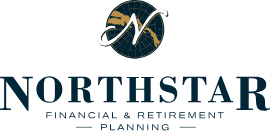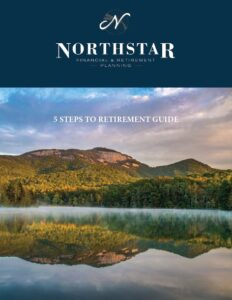Avoid the Tax Tornado in Early Retirement and Beyond
Maybe you weren’t planning on making retirement decisions so soon or have been planning for years. Most folks at this crossroads have arrived from three paths. Which one is yours?
#1- You’ve been let go from your former employer.
With experience comes wisdom— and often more expensive benefits that the firm no longer wants to pay. Can you afford to retire on what you have saved?
#2- You’ve been offered a retirement buyout.
It’s tempting, but is it the best deal for you? Will the package explode your plans down the road? What do you need to know to make the best decision?
#3- You were dedicated to your career and loved your job for years and years … until now.
You’re not sure if the hours are worth it anymore, but you don’t know if early retirement is the right move. Would it be better in the long term if you continued until full retirement age, even though you must make personal sacrifices to do so? There’s help.
Retirement Income and Taxes: Tornado Watch
How can you avoid the Tax Tornado in early retirement and beyond?
It’s critical to make sure that you know all the moving parts and what could go wrong because if it does, you might be in trouble with the IRS. The good news is that our team has a long history with these types of retirement tax turbochargers, and we know exactly what the hidden levers are that could make them fall apart.
We take pride in making sure that our clients maximize the retirement tax savings that are available to them without fear from Uncle Sam. NorthStar can help you avoid the Tax Tornado in early retirement and beyond.
Our experience with retirement planning helps ensure that you have professionals who can steer you through the potential minefields without obliterating your nest egg.
CONCERN #1: Do I have enough money to retire?
Leaving the workforce can be a difficult transition for anyone, even without a short fuse on your retirement countdown. Throughout your life, you’ve brought in a regular income and added to your investment assets. Now you’re facing the critical transition from income generation to drawing down your savings to fund your expenses.
If you’re too young to claim Social Security, you’ll need to create a plan to bridge the income gap until you reach claiming age. If you’re under age 591⁄2 you may be penalized for drawing down retirement accounts (on top of the potential tax bill you’ll owe).
Even if you’ve got enough cash on hand to avoid drawing on your investments, you may still want to adjust your investment mix. When you’re on the brink of exiting the workforce, protecting your money from fluctuations in the stock market becomes critical. Preparing your portfolio to ride out bear markets and recessions is key when your portfolio is the foundation of your retirement lifestyle.
CONCERN #2: Will I be able to sustain my current lifestyle?
You may or may not have a detailed understanding of your current household expenses. Developing even a general understanding of your budget now will help avoid problems later. If you make adjustments quick enough, you may have a better chance of a comfortable early retirement.
If you’re in the position of being able to choose early retirement instead of having it thrust upon you, the cost of quitting or taking a buyout package may not be immediately clear. It’s important to evaluate the tradeoffs between a work-free life you enjoy and the cost of cutting back on expenses.
Don’t forget to consider “hidden” costs that can sabotage your golden years. You could end up caring for elderly parents and having your buying power eroded by inflation, for example. Get the information you need quickly, and make sure you’re not missing anything required for a good decision.
CONCERN #3: What do I need to know about health care when my employer plan no longer covers my family and me?
Aside from your employer, you may be eligible to get coverage through state exchanges or COBRA.2 Right now it might not be clear how extensive or expensive these alternatives are, though they’re likely to cost more than your employer’s coverage.
Health care and related costs could wreck your financial plan if not carefully planned for. You’re generally not eligible for Medicare until age 65, and even then you may face additional costs for supplemental insurance and long-term care.
If you were offered a retirement buyout, your employer may provide health care coverage for a period of time after you leave. You’ll need to determine if it’s enough to cover you until you reach Medicare eligibility.
It’s critical to maintain health insurance coverage because health status can make it very difficult to get on a new plan. And such a plan could be much more expensive. Therefore you must figure out your best course of action quickly before you lose coverage.
CONCERN #4: How do I evaluate my early retirement package?
Extremely tempted to take the money and run? You’ll want to be sure your decision won’t blow up in your face later. The package must provide enough funding and benefits for you and your family so your money lasts through retirement.
The viability of the package doesn’t just depend on the lump sum payment typically offered. Benefits that work for someone who’s five years away from being able to claim Social Security might not be right for someone ten years away.
Other confirmed job prospects are an additional factor in your decision. It could be a no-brainer if you’ve got potential employment offers already lined up. But if you don’t, the package may not be enough to finance your exit. Conversely, your current employer’s financial health and ongoing prospects are also considerations.
CONCERN #5: You may be directly Tax Tornado pathway as a result of your current savings strategy.
How can you avoid the Tax Tornado in early retirement and beyond?
Most Americans who are contributing to retirement plans receive a current tax deduction for their contribution. But, when you’re old enough to start taking money out, the entire amount of your withdrawal is taxable at your future income tax rate.
The goal is that when you’re no longer earning income, your tax rate should be lower. Unfortunately, tax rates fluctuate and this strategy doesn’t always work out for high earners. The larger your pool of tax-deferred money, the more you’ll be sending Washington’s way when you’re older.
Many high earners have figured out some commonly overlooked strategies to reduce their taxes by tweaking their current saving strategy. One is to contribute to a tax-free Roth account. You don’t get this year’s tax deduction, but if you follow the rules, you can take the money out tax-free when you’re older.
Sounds great, right?
Well.. about that. These techniques, especially Roth conversions, are often used by wealthy taxpayers. And they’re a target for legislative change.
It’s possible that Roth conversions could disappear entirely, or disappear for those in the higher tax brackets.
Because income tax rates and brackets can (and do) change frequently, it’s sometimes difficult to know if you’re making the right decision to do a Roth conversion. No one really knows whether future tax rates could be lower than what you’re paying now.
If you’re retiring this year or you just recently retired, assuming you haven’t reached age 72 yet, you could have an opportunity. The years between retirement and required distributions can also be good ones for Roth conversions.
At first this strategy may seem a little counter-intuitive, because it could involve paying more taxes now than you would have otherwise. It’s known as filling up your tax bracket.
As long as the current tax bracket that you’re in is lower than what you can expect later, filling it up without going over the bracket ceiling could help you reduce taxes throughout your lifetime.
You might already know that the tax brackets can contain a fairly wide range of incomes.
For example, in 2022 the 24% tax rate is applicable to married couples filing jointly making between $178,150 and $340,100.
Suppose you and your spouse earned $240,100. You’d have an additional $100,000 of income that you could earn and still pay only 24% tax on. If you think later on you might move up to higher tax brackets, due to an act of Congress or because you earn more, you can see that you could save in taxes by accelerating some income into your current lower bracket.
If you think that you will be in a higher tax bracket in later years, it’s ideal to start with a Roth IRA from the outset. However, a Roth conversion allows you to convert your regular Traditional IRA to an after-tax Roth, by strategically paying income taxes at your current rate.
A mega backdoor Roth (as this technique is known) can be an excellent way to turbocharge future tax-free income — if your employee retirement plan allows for it and if you do it exactly right. But if you get the details wrong, you could end up with much more taxable money than you’d planned.
For this strategy to work, your employer retirement plan must allow 1) after-tax contributions on top of your regular salary deferrals (not all plans do); and 2) in-service withdrawals.
You’ll also want to have already maxed out salary deferrals, IRA contributions, and have extra cash you’d like to stuff into your retirement nest egg and pay any taxes owed.
The total contribution for defined contribution plans such as a 401(k) is set each year, including catch-up contributions if you’re over age 50. When you add up maximum salary deferrals and any employer matches, you could still have thousands to add in after-tax contributions ($45,000 or more for some), if your plan allows.
Then, as long as you have everything in place, you can roll those after-tax contributions over to a Roth account and enjoy the tax-free benefits in retirement.
Either way, be on the lookout for lower-income years that lend themselves to Roth conversions. Make sure that you don’t convert too much and push yourself into a higher tax bracket.
Have you walked through my strategy with a financial professional?
You have an important choice to make.
You can continue to hope the rules don’t change so you can discover critical tax-saving strategies later…
You can hope your retirement income and tax strategy is not wasting any tax savings you could use towards your more important goals…
You can go about your day wondering which commonly overlooked high-earner strategies you’re missing (that could have a ripple effect on your tax strategy)… or you can give us a call for your FREE retirement income and tax planning meeting to see how you can avoid the Tax Tornado in early retirement and beyond (864) 297-0762 or email us.








